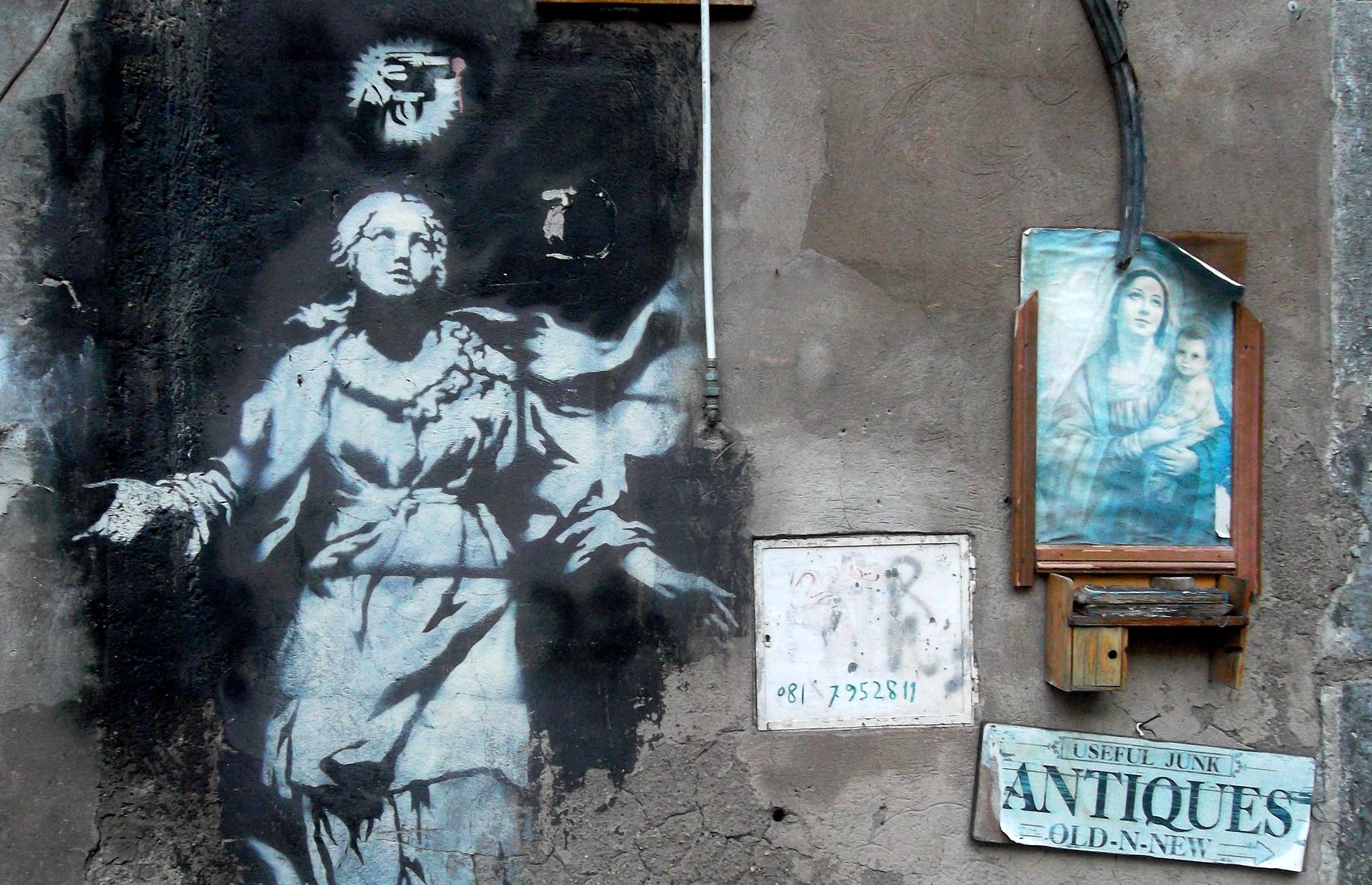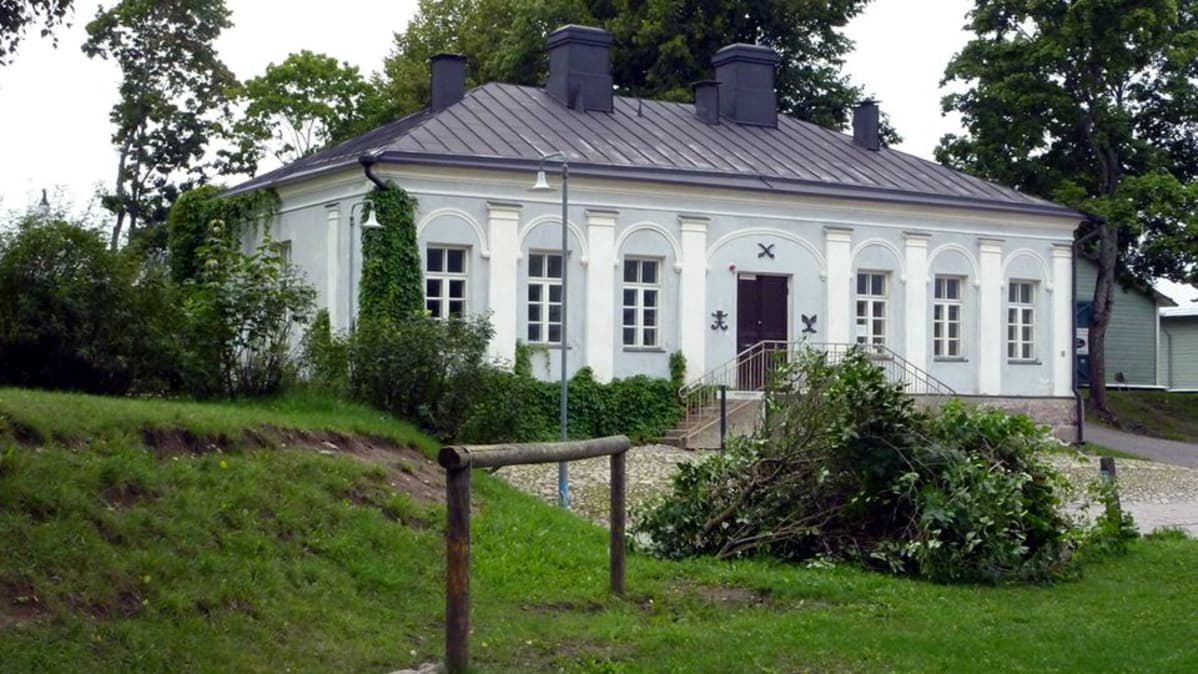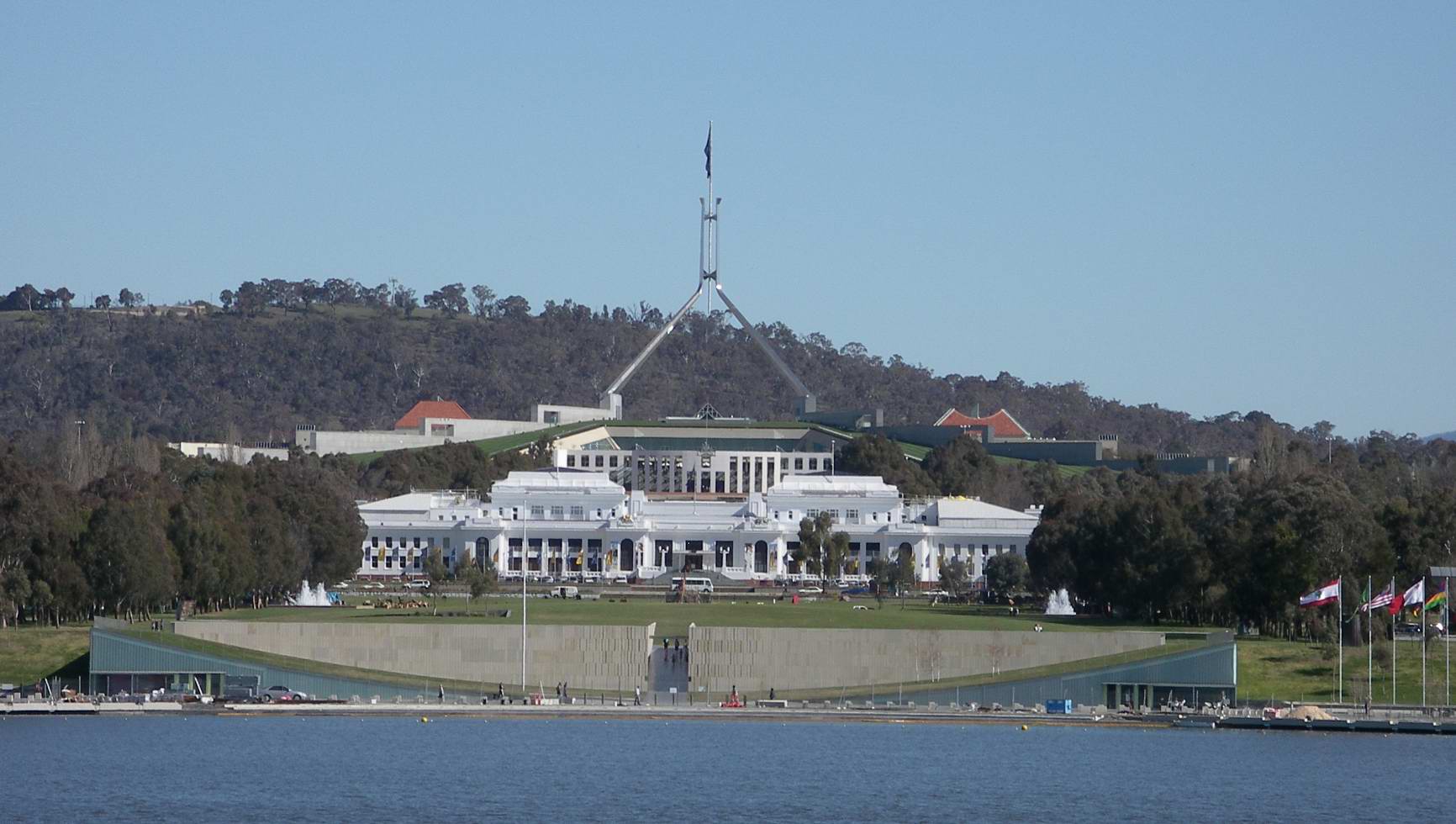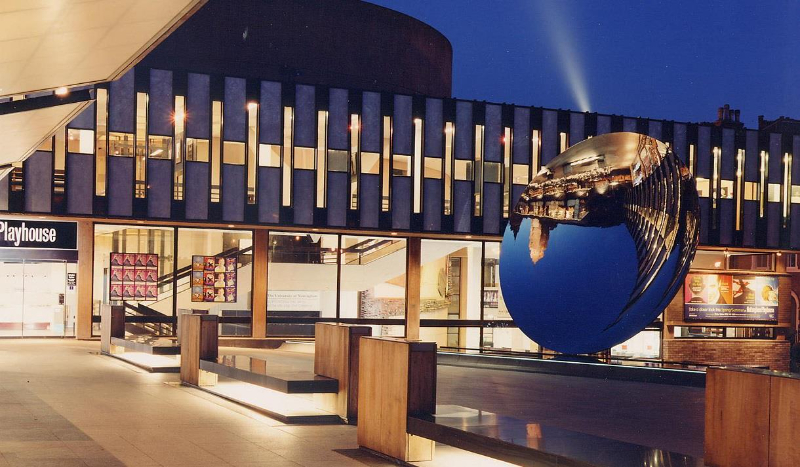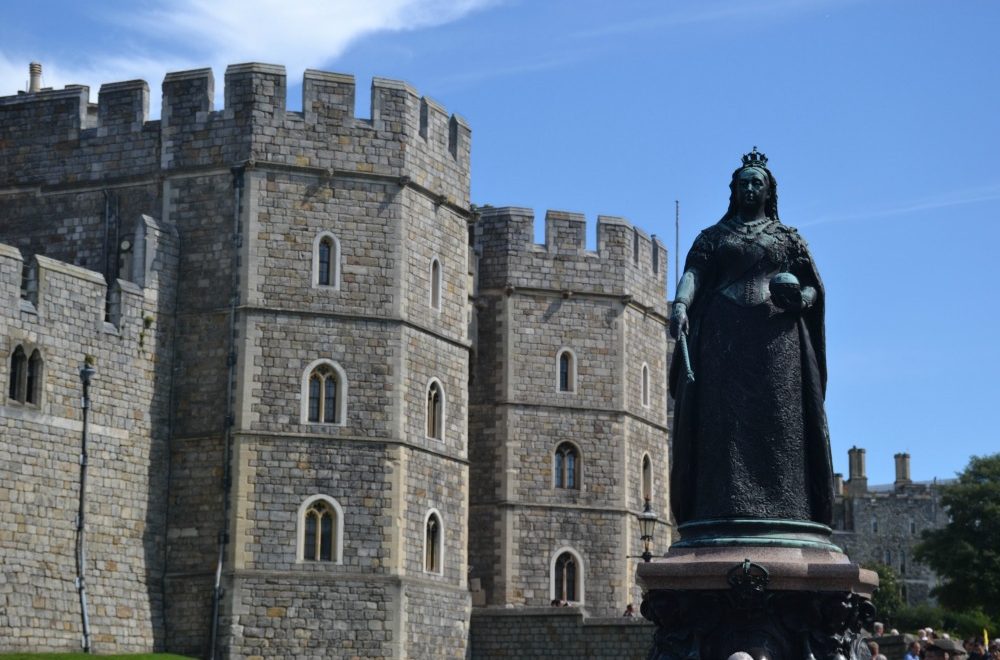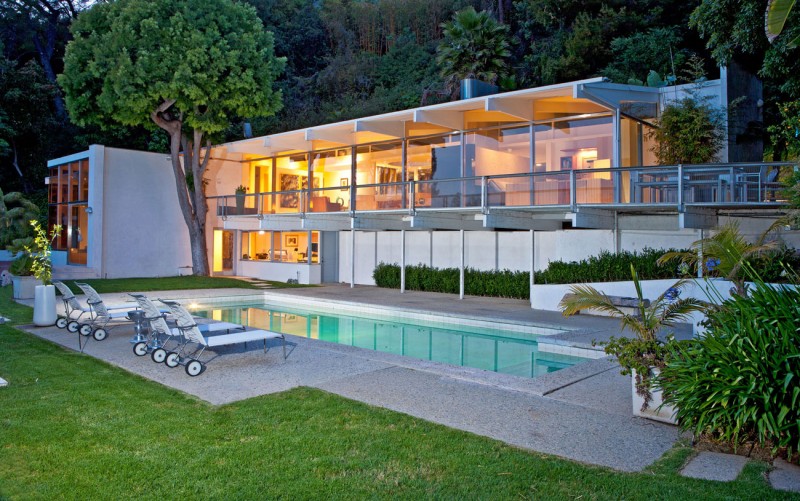Banksy is considered to all intents and purposes the most important and popular exponent of Street-Art ever, although his identity remains unknown.
Since the nineties he has been creating his works on streets, bridges and walls thanks to the stencil technique, which allows him to act with great speed, eluding the attention of passers-by and the police. Active mainly in Bristol, his hometown, within thirty years his graffiti appeared in public spaces around the world, including Italy. The choice made by Banksy in Italy, namely to act in the cities of Naples and Venice, popular for their artistic and cultural heritage, is anything but random.
The places where Banksy identifies and acts have always been those most animated by deep contradictions. His quest as a street-artist has led him, like no other writer, to produce some of the most iconic images in history and to consolidate the power of Street-Art within the international art market.
In Naples we find "The Madonna with the gun" in Piazza Gerolomini. To create this work Banksy used the stencil technique, a negative support that allows you to create the mural in a short time.
Banksy’s work was later put in a glass case to protect it from bad weather and vandalism. Banksy depicts the Virgin with a smoking gun on her head instead of a halo, while her gaze is turned towards another Madonna of a votive shrine no longer present.
For the famous Street Artist, the revolver perhaps represents the strong link between organized crime and religion in Naples.
Banksy had also made a second mural in Naples in Via Benedetto Croce, unfortunately deleted by another writer, with the reinterpretation of the Ecstasy of the Blessed Ludovica Albertoni by Bernini.
The woman appeared in full ecstasy after consuming a sandwich, chips and a Coke from McDonald’s, with a clear attack on the phenomenon of consumerism by the author.
There is much debate about the identity of this incredible artist, but some have wondered: could the Bristol artist have Neapolitan ancestry?
But let’s take a leap and move to Great Britain, westwards, towards Wales. This is where Bristol is located, the city that not only gave an impetus to the world of Street Art, but at the same time led to the revival of musical groups belonging to the Trip Hop genre. Among them is Massive Attack. Their leader, Robert del Naja, has a lot in common with Banksy: besides being an excellent singer and composer, he is a street artist, has a style strikingly similar to Banksy and above all is the one who perfected the stencil technique. As a street artist he was known as 3D. Banksy has repeatedly cited him as a source of inspiration for his works. According to an investigation by the journalist Craig Williams, it would be Del Naja himself who hides behind the stage name Banksy, whose real name seems to be Rob (Robert, Robin, something else?).
Robert del Naja’s origins, on his parents’ side, are Neapolitan!
Of course: Robert himself admits to being a great friend of Banksy and to having shared many projects with him. But could they be the same person? This would explain why Banksy’s first Italian mural is located in Naples, to be precise, the first two murals.
Who knows, maybe one day we’ll find out, but it’s nice to believe it.
The works of this artist have now reached incredible figures and it is also worth remembering an event a few years ago. Event that has certainly helped to increase the prices of his works.
It was October 6, 2018 when at Sotheby’s, the most famous London auction house in the world, the auctioneer had just hit the bench with a gavel. One million pounds for "Girl with a balloon", one of Banksy’s most famous works.
Moments after the bidding, however, half of the famous canvas disappeared, thanks to a mechanism hidden in the frame that shredded it!
The stunned audience of buyers watched in amazement as one of the artist’s most famous and, as they say today, iconic works was shredded into strips. Spray paint and acrylic on canvas and a very thick golden frame all around.
Why so thick? It was discovered on that very occasion.
In September 2021, the painting, after having graced the buyer’s home for 36 months, on the strength of the hype of the event at the time, returned to auction once again with a base price almost 6 times higher.
The nearest Metro Line 1 stops are Museo or Dante; alternatively you can get off at the Cavour stop on Metro Line 2.
